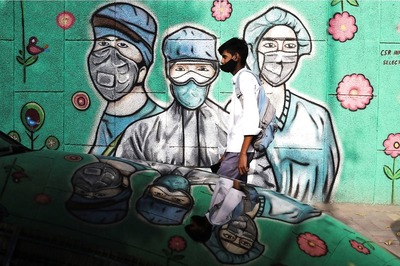
views
THIRUVANANTHAPURAM: The writings of Chattambi Swamikal are cases in defence of the basis of Hindu spirituality in the Vedanta tradition apart from being historical records. Despite efforts to compile his writings, a sizable portion of the dictated notes and scribblings were lost due to poor upkeep and inadequate documentation. The recent discovery of a corpus of articles believed to have been written by Chattambi Swamikal and hitherto considered non-existent, has stirred the interest of historians and researchers. Two editions of the magazines ‘Sadguru’ and ‘Pouran’, carrying four articles attributed to Chattambi Swamikal were unearthed by Suresh Madhav, a researcher registered with the University of Kerala. The essays were compiled into three books which were brought out by the publication wing of Panmana Ashram in Kollam, the resting place of Swamikal, early this week. The articles are penned under the pseudonym ‘Agasthyan’, which is known to have been used by Chattambi Swamikal. The sage, named Kunjan Pillai in his poorvashram, attributed the title of ‘Chattambi’ in recognition of his mastery of yoga. He wrote extensively on Vedanta, spirituality and linguistics under this pseudonym. “The articles appeared in the 1928 edition of Sadguru magazine and in 1922 in Pouran magazine. Both the magazines stopped publication around 1932. I came to know of the existence of the original copies of the magazines in Thevalakkara in Kollam district while researching the whereabouts of around 10 articles penned by Swamikal,” said Suresh Madhav. The findings include a paper that elucidates the canonical importance of Tamil literature and culture in shaping what is identified as Dravidian aesthetics. One of the last literary works believed to have been authored by Swamikal- the translation of a Vedantic treatise in Tamil penned by 16th century poet Kannudaya Vallalar- also figures among the pieces that were unearthed. M G Sasibhooshan, who co-authored the forward of the compilation along with Puthussery Ramachandran, confirmed the authenticity of the articles. “The articles reflect the extremely personalised writing style of Chattambi Swamikal and the sentences have the characteristic long-winding manner. They were most probably dictated to a disciple as his own style was to make casual pencil scribblings that were scarcely compiled,” he said.However, Sasibhooshan refused to endorse the authenticity of an appendix to an essay on the ‘Koodal Manikya’ temple in Irinjalakuda, which elaborates on the history of Buddhism in Kerala. The main body of the essay talks about the tradition of appointing ‘Thachudaya Kaimal’ as the ‘adhikari’ of the temple by the King of Travancore state. Pointing out that he had seen the particular essay only after the book was published, he said,”The article is obviously based on T A Gopinatha Rao’s Travancore Archaeological series published in 1930, which was in English. Swami’s knowledge of English is not known to have gone beyond the basics and it is highly improbable that the essay was written by him. But for this particular piece, the finding is commendable and can contribute to the studies on Kerala history,” he said. Madhav had earlier deciphered manuscripts written in ‘Vattezzhuthu’ script, discovered from Thevalakkara temple. Madhav, who holds a post graduation in Malayalam, had learned ‘Vattezhuthu’ as a key to gaining access to ancient manuscripts, often discarded by old households and temples. Copies of Sadguru and Pouran were lost to posterity when the KSEB acquired the building in Irinjalakuda, where they were stored.



















Comments
0 comment